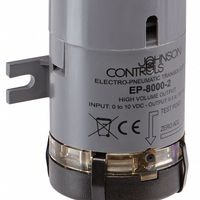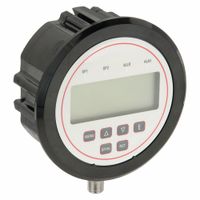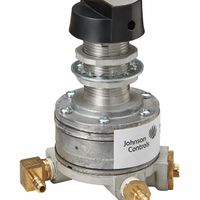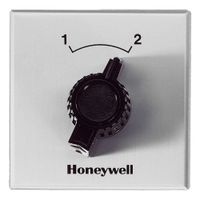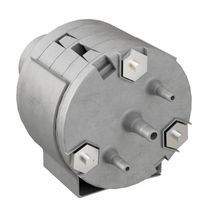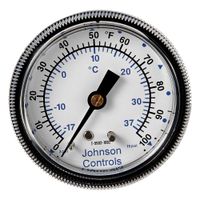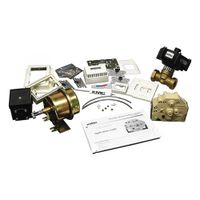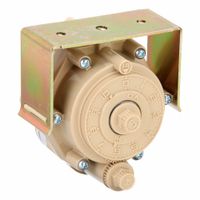Call +(254) 703 030 000 / 751 483 999 / 721 704 777
- Home
- Hvac And Refrigeration
- Hvac Controls And Thermostats
- Pneumatic Controls
.....Read More
Frequently Asked Questions
What are pneumatic controls in HVAC systems?
Pneumatic controls in HVAC systems are mechanisms that use compressed air to regulate and control heating, ventilation, and air conditioning equipment. These systems rely on air pressure to transmit signals and operate various components such as dampers, valves, and actuators. Pneumatic controls are often used in commercial and industrial settings due to their reliability and simplicity.
The core components of a pneumatic control system include a compressor, which generates the compressed air, and a network of air lines that distribute this air to different control devices. Thermostats, sensors, and controllers are used to monitor environmental conditions and send signals to the pneumatic actuators. These actuators then adjust the position of dampers or valves to maintain desired temperature and airflow levels.
Pneumatic controls are favored for their durability and ability to function in harsh environments where electronic controls might fail. They are also less susceptible to electrical interference and can be more cost-effective in large-scale applications. However, they require regular maintenance to ensure air lines are free of leaks and that the system remains calibrated.
Despite the rise of digital and electronic controls, pneumatic systems are still prevalent in older buildings and facilities where retrofitting with modern systems may not be feasible. They offer a straightforward, mechanical approach to HVAC control, making them a reliable choice for many applications.
How do pneumatic receiver-controllers work?
Pneumatic receiver-controllers are devices used in process control systems to maintain a desired setpoint by adjusting the output pressure to a final control element, such as a valve or damper. They operate using compressed air as the power source and signal medium.
The basic components of a pneumatic receiver-controller include a sensing element, a setpoint adjustment mechanism, a feedback mechanism, and a pneumatic relay. The sensing element detects changes in the process variable, such as temperature, pressure, or flow rate. This element is often a bellows, diaphragm, or bourdon tube that expands or contracts in response to changes in the process variable.
The setpoint adjustment mechanism allows the operator to set the desired value for the process variable. This is typically done using a dial or screw that adjusts the tension on a spring connected to the sensing element.
The feedback mechanism ensures that the controller maintains the process variable at the setpoint. It compares the actual process variable with the setpoint and generates an error signal, which is the difference between the two. This error signal is used to adjust the output pressure.
The pneumatic relay amplifies the error signal and converts it into a proportional output pressure. This output pressure is sent to the final control element, which adjusts the process to bring the variable back to the setpoint. The relay often includes a nozzle-flapper mechanism that modulates the air pressure based on the position of the flapper relative to the nozzle, controlling the output pressure.
Overall, pneumatic receiver-controllers are reliable and robust, making them suitable for various industrial applications where electrical control systems might not be ideal.
What is a variable air volume reset controller?
A Variable Air Volume (VAV) reset controller is a component in HVAC (Heating, Ventilation, and Air Conditioning) systems designed to optimize airflow and energy efficiency. It adjusts the volume of air supplied to different zones or spaces within a building based on the current demand, ensuring comfort while minimizing energy consumption.
The VAV system operates by varying the airflow at a constant temperature, unlike constant air volume systems that maintain a constant airflow and vary the temperature. The reset controller plays a crucial role in this process by dynamically adjusting the setpoints for airflow and temperature based on real-time data from sensors that monitor parameters like temperature, humidity, and occupancy levels.
Key functions of a VAV reset controller include:
1. **Demand-Based Control**: It modulates the air volume delivered to each zone according to the specific heating or cooling requirements, which can change throughout the day due to factors like occupancy and external weather conditions.
2. **Energy Efficiency**: By supplying only the necessary amount of conditioned air, the controller reduces energy consumption, leading to lower operational costs and a smaller carbon footprint.
3. **Comfort Maintenance**: It ensures that the indoor environment remains comfortable by maintaining the desired temperature and air quality, adjusting the airflow as needed to prevent overcooling or overheating.
4. **Integration with Building Management Systems (BMS)**: The controller can be integrated with a BMS for centralized monitoring and control, allowing facility managers to optimize performance and troubleshoot issues remotely.
5. **Flexibility and Scalability**: Suitable for various building types and sizes, VAV systems with reset controllers can be easily scaled and adapted to meet changing needs.
Overall, a VAV reset controller is essential for modern HVAC systems, balancing comfort and efficiency by intelligently managing airflow in response to real-time conditions.
How do pneumatic variable air volume kits function?
Pneumatic Variable Air Volume (VAV) kits function by regulating the airflow to different zones in a building's HVAC system to maintain desired temperature settings. These systems use compressed air as a control medium to adjust the position of dampers within the ductwork.
The primary components of a pneumatic VAV system include a thermostat, a pneumatic actuator, a damper, and a controller. The process begins with the thermostat, which senses the temperature in a specific zone. If the temperature deviates from the setpoint, the thermostat sends a pneumatic signal, typically in the form of varying air pressure, to the controller.
The controller interprets this signal and adjusts the air pressure sent to the pneumatic actuator. The actuator, which is connected to the damper, responds to the changes in air pressure by moving the damper to either increase or decrease the airflow. For instance, if a room is too warm, the thermostat will signal the controller to reduce the air pressure to the actuator, causing the damper to open more and allow more cool air into the space.
Pneumatic VAV systems are advantageous in that they provide precise control over airflow, leading to energy savings and enhanced comfort. They are particularly useful in large buildings with multiple zones requiring different temperature settings. Additionally, these systems are relatively simple and reliable, as they do not rely on complex electronic components, making them easier to maintain in some cases.
Overall, pneumatic VAV kits are an effective solution for managing airflow and temperature in commercial and industrial settings, ensuring efficient energy use and occupant comfort.
What is the role of air-switching valves in HVAC systems?
Air-switching valves in HVAC systems play a crucial role in regulating and directing airflow to maintain optimal environmental conditions within a building. These valves are responsible for controlling the distribution of air between different zones or components of the HVAC system, ensuring that the desired temperature, humidity, and air quality levels are achieved efficiently.
Primarily, air-switching valves manage the flow of conditioned air by opening, closing, or modulating to direct air to specific areas as needed. This is essential for systems that require variable air volume (VAV) control, where the amount of air delivered to different zones must be adjusted based on occupancy, usage, or external weather conditions. By doing so, these valves help in maintaining comfort while optimizing energy consumption.
In addition to regulating airflow, air-switching valves can also be used to control the mixing of fresh outdoor air with recirculated indoor air. This is important for maintaining indoor air quality by ensuring adequate ventilation and preventing the buildup of pollutants or stale air. The valves can be integrated with sensors and control systems to respond dynamically to changes in indoor air quality or occupancy levels.
Furthermore, air-switching valves contribute to the overall efficiency and performance of HVAC systems by reducing the load on heating and cooling equipment. By precisely controlling airflow, they minimize the need for excessive heating or cooling, leading to energy savings and reduced operational costs.
In summary, air-switching valves are vital components in HVAC systems, providing precise control over airflow distribution, enhancing comfort, improving indoor air quality, and contributing to energy efficiency.
How do electric-to-pneumatic transducers operate?
Electric-to-pneumatic transducers, also known as I/P (current to pressure) converters, operate by converting an electrical signal into a proportional pneumatic output. These devices are commonly used in industrial control systems to interface electronic control systems with pneumatic actuators or valves.
The operation begins with an electrical input signal, typically a 4-20 mA current loop, which represents a specific control variable. This electrical signal is fed into the transducer, where it is converted into a magnetic field using a coil. The strength of the magnetic field is directly proportional to the magnitude of the input current.
Inside the transducer, a flapper-nozzle system is used to modulate the air pressure. The magnetic field generated by the coil interacts with a small armature or flapper, which is positioned near a nozzle. The position of the flapper relative to the nozzle determines the amount of air that can escape from the nozzle. When the flapper is close to the nozzle, less air escapes, increasing the back pressure in the system.
This back pressure is then used to control a pneumatic relay or booster, which amplifies the pressure to a level suitable for operating pneumatic devices. The output pressure is typically in the range of 3-15 psi, corresponding to the 4-20 mA input signal.
Feedback mechanisms are often incorporated to ensure accuracy and stability. A pressure sensor may be used to monitor the output pressure and adjust the flapper position to maintain the desired pressure level, compensating for any variations in supply pressure or other disturbances.
Overall, electric-to-pneumatic transducers provide a reliable means of converting electronic control signals into pneumatic actions, enabling precise control of pneumatic systems in various industrial applications.
What are pneumatic relays and how do they function?
Pneumatic relays are devices used in pneumatic systems to amplify or control the pressure or flow of air. They function as signal amplifiers, controllers, or switches, enabling the operation of larger pneumatic components based on smaller input signals.
A pneumatic relay typically consists of a diaphragm, a valve mechanism, and a set of ports for air input and output. The diaphragm is a flexible membrane that responds to changes in air pressure. When a small input pressure is applied to the diaphragm, it moves, causing the valve mechanism to open or close. This action allows a larger volume of air to flow through the output port, effectively amplifying the input signal.
There are several types of pneumatic relays, including volume boosters, pressure regulators, and pilot-operated valves. Volume boosters increase the flow capacity of a system, allowing for faster response times. Pressure regulators maintain a constant output pressure despite variations in input pressure or flow demand. Pilot-operated valves use a small control signal to operate a larger valve, enabling the control of high-pressure or high-flow systems with minimal effort.
Pneumatic relays are essential in applications where precise control of air pressure and flow is required, such as in industrial automation, process control, and HVAC systems. They ensure that pneumatic actuators, cylinders, and other components receive the correct pressure and flow to perform their functions efficiently. By amplifying and controlling air signals, pneumatic relays enhance the performance and reliability of pneumatic systems.

